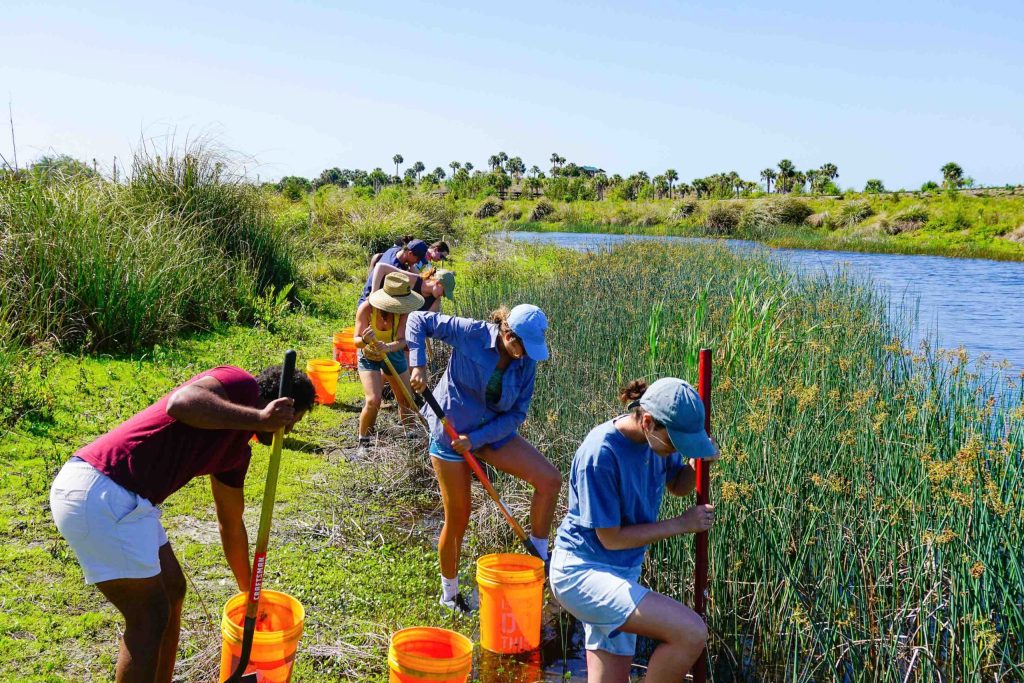Conservation efforts are crucial for safeguarding the environment and preserving biodiversity. These initiatives aim to protect natural resources, restore ecosystems, and ensure that future generations inherit a healthy and sustainable planet. This article explores various conservation efforts, their importance, and the actions individuals and communities can take to support environmental preservation.

The Importance of Conservation
- Biodiversity Protection: Conservation efforts help protect the diverse range of species that inhabit our planet. Biodiversity is essential for ecosystem stability, resilience, and the provision of ecosystem services such as pollination and water purification.
- Ecosystem Restoration: Many ecosystems have been degraded due to human activities. Conservation projects focus on restoring these ecosystems to their natural states, improving habitat quality, and enhancing ecological balance.
- Climate Regulation: Healthy ecosystems play a vital role in regulating the climate by sequestering carbon dioxide and supporting weather patterns. Forests, wetlands, and oceans act as carbon sinks, helping to mitigate climate change.
- Sustainable Resource Management: Conservation ensures the sustainable use of natural resources, such as water, minerals, and forests, preventing overexploitation and depletion. This helps maintain resource availability for future generations.
- Cultural and Recreational Value: Natural areas provide cultural, recreational, and aesthetic value. They offer spaces for recreation, inspiration, and connection with nature, contributing to human well-being and quality of life.
Key Conservation Efforts and Strategies
- Protected Areas and Reserves: Establishing protected areas, such as national parks and wildlife reserves, helps safeguard critical habitats and species from development and exploitation.
- Designations: These areas are designated to conserve unique ecosystems, endangered species, and culturally significant landscapes.
- Wildlife Conservation: Efforts to protect endangered and threatened species include habitat protection, anti-poaching measures, and breeding programs to ensure species survival.
- Species Recovery Plans: Organizations develop and implement plans to address specific threats to wildlife and support recovery efforts.
- Reforestation and Afforestation: Planting trees and restoring forests help combat deforestation, enhance biodiversity, and improve air and water quality.
- Tree Planting Initiatives: Reforestation projects focus on planting native species and restoring degraded forest areas.
- Marine Conservation: Protecting marine environments through the establishment of marine protected areas, sustainable fishing practices, and pollution control measures helps preserve ocean ecosystems and biodiversity.
- Ocean Conservation: Initiatives address issues such as overfishing, marine pollution, and habitat destruction to protect marine life and ecosystems.
- Sustainable Agriculture: Promoting sustainable agricultural practices, such as organic farming and agroforestry, helps reduce environmental impact, preserve soil health, and support biodiversity.
- Agroecological Approaches: These approaches focus on integrating agricultural practices with ecosystem conservation to enhance productivity and environmental health.
- Education and Advocacy: Raising awareness about conservation issues and advocating for environmental policies help garner public support and drive action towards environmental protection.
- Community Engagement: Education programs and advocacy campaigns aim to engage communities in conservation efforts and promote sustainable practices.
- Research and Monitoring: Conducting research and monitoring environmental changes provide valuable data for informing conservation strategies and assessing the effectiveness of conservation actions.
- Data Collection: Research efforts focus on understanding ecological processes, species behavior, and the impacts of human activities on the environment.

Actions for Supporting Conservation
- Reduce, Reuse, Recycle: Adopting the principles of reducing waste, reusing items, and recycling materials helps minimize environmental impact and conserve resources.
- Support Conservation Organizations: Contributing to and volunteering with organizations dedicated to conservation efforts can amplify the impact of their work and support important projects.
- Practice Sustainable Living: Making eco-friendly choices in daily life, such as using energy-efficient appliances, conserving water, and reducing single-use plastics, contributes to environmental protection.
- Advocate for Policy Change: Supporting and advocating for environmental policies and legislation that promote conservation and sustainability can drive systemic change and improve environmental outcomes.
- Participate in Citizen Science: Engaging in citizen science projects helps collect valuable data on environmental conditions, species populations, and habitat changes.
- Educate Others: Sharing knowledge about conservation issues and promoting sustainable practices within your community can inspire collective action and increase awareness.
- Support Sustainable Products: Choosing products that are sustainably sourced and produced, such as eco-friendly goods and responsibly harvested materials, supports conservation efforts and reduces environmental impact.
Challenges and Future Directions
- Climate Change: Addressing climate change remains a significant challenge for conservation efforts, as it impacts ecosystems, species, and resource availability.
- Biodiversity Loss: Combatting the ongoing loss of biodiversity requires concerted efforts to protect habitats, reduce pollution, and address the root causes of species decline.
- Funding and Resources: Securing adequate funding and resources for conservation projects is essential for implementing and sustaining effective conservation initiatives.
- Global Cooperation: International collaboration and agreements are necessary to address global conservation challenges and protect shared natural resources.
- Integrating Conservation and Development: Balancing conservation goals with the needs of communities and economic development requires innovative solutions and integrated approaches.

Conclusion
Conservation efforts are vital for preserving the health and diversity of our planet’s ecosystems. By protecting natural areas, supporting wildlife conservation, and adopting sustainable practices, we can contribute to the preservation of biodiversity and the sustainable management of resources. Through education, advocacy, and individual actions, we can play a role in supporting conservation initiatives and ensuring a healthy and vibrant environment for future generations. As we face ongoing environmental challenges, collective action and commitment to conservation will be crucial in safeguarding our planet’s natural heritage.


